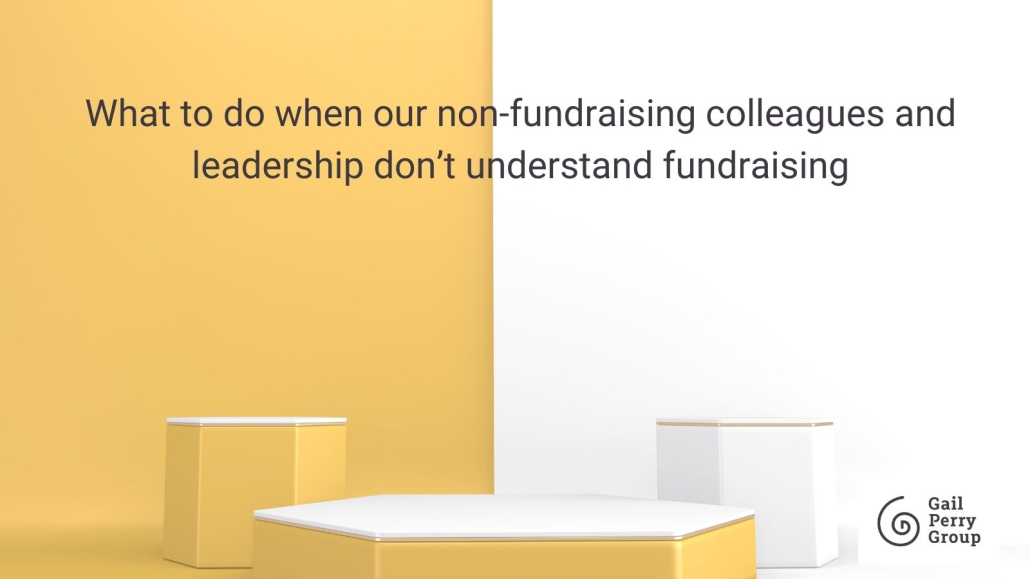Build a Culture of Philanthropy: Conversations with Doubting Colleagues

By Beth Ann Locke
Most fundraisers aim to build a Culture of Philanthropy within their organizations. It’s so important – because internal support is an important stepping stone to fundraising success – particularly in major gift and transformational gift work.
As fundraisers, we know our most loyal donors have a deep connection between their personal values, and our mission and outcomes.
We engage in meaningful conversations with our donors, because substantial gifts start from a place of connection and trust.
But then some of us run into the doubters and nay-sayers within our own organizations:
“Why are you out running around having meetings so much?”
Receive expert advice. Direct to your inbox. Subscribe
“It must be easy to get money from rich people.”
“I wish we didn’t have to ask for money to get our work accomplished at all!”
Want to know how you overcome the objections, hesitations, and fears that some of your colleagues (or leaders) feel about major gift fundraising? We’ve got you covered!
Here is what our Major Gifts Intensive clients are hearing – and some of the tools and phrases you can use to help them to help build a culture of philanthropy and better understand your work.
Conversations That Help to Build a Culture of Philanthropy
1. Colleagues say: “I know we need funding – can’t you just raise money from grants and events?”
Grants and events income are revenue streams – but raising major gifts from individuals opens the possibility for increased gifts, broader support, and more sustainable donor giving.
What you can say:
Find out how we can help you achieve your fundraising goals with world-class consulting and custom training.
“Building relationships with individual donors means we aren’t restricted to asking on a grant cycle.
And major gift fundraising has a much better return on our investment of time and energy, than events.
Working with individuals or families is about connecting with their interests, passions, and values. When we meet them at the intersection of their values and our work – asking for a major or transformational becomes less about money and more about the work we accomplish together.”
2. The CEO may say to you: “I know I should talk with our supporters. But asking for money makes me nervous, even embarrassed.
One on one fundraising seems so hit or miss, and I can never tell when it will work.”
To non-development colleagues, fundraising can seem mysterious, a never-ending grind, or a necessary evil.
I believe that organizational leaders are important collaborators in fundraising, but that the major gift teams are the experts ni how to raise money.
A tool you may offer colleagues is a visual of the donor cycle showing how we build and nurture relationships to raise money successfully.
What you can say:
“Working with major donors is about relationships, trust, and partnership.
In fact, we almost never ask for money but instead, we invite donors to be part of the solution at the heart of our mission.
Major and transformational gift donors need and want to understand our vision for the future – and join in getting our community there.
Money is simply a tool to that end. We identify supporters and nurture their relationships as a key element of our work.
Then we set up an ask and close the gift. Sometimes we don’t even ask – the donor asks what they can do to make the vision a reality.”
3. Your colleagues may say: “People with the ability to give should be supporting our mission – our work is that great.
We need to talk about our successes and raise awareness. That will get people to donate.”
Talking only about successes and not about where support is needed doesn’t actually attract donors – it attracts fans.
Fundraisers create donor-shaped spaces in the narrative for people to enter to help solve the issue – by giving.
They want to be part of the team to accomplish a better world together. We also know that donors aren’t cash machines… they give to a cause, not to a need.”
What you can say:
“Doing diligent work and achieving success around our mission is important.
But donors want to offer their support where it is needed – and if there is already a success and seemingly nothing left to accomplish, why would they give?
Donors want to understand why their gift is needed and what it will accomplish. Major gift donors want to be inspired!
In most cases, there is still work to do in this world – cures, injustices, avenues for better tomorrows. When we have those meaningful conversations with supporters, they see how they can be part of that solution – by giving.”
Bottom Line: How to Build a culture of philanthropy.
This is joyful, important work! Help your colleagues understand this isn’t easy work, but it also isn’t intimidating.
Donors can be supportive partners is getting to a brighter future. Use the tools and conversations to bridge the objections.



